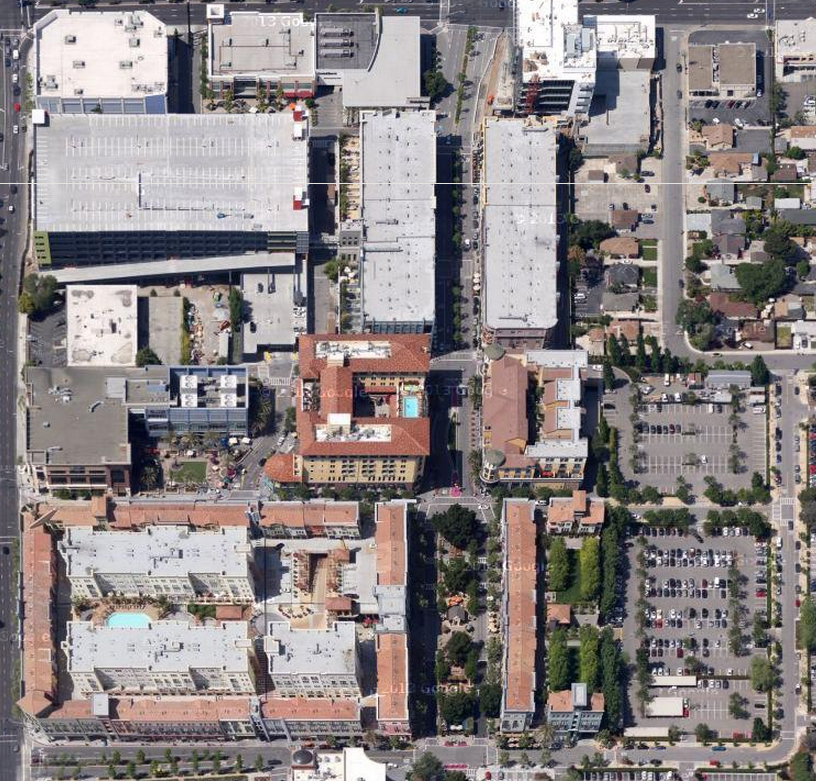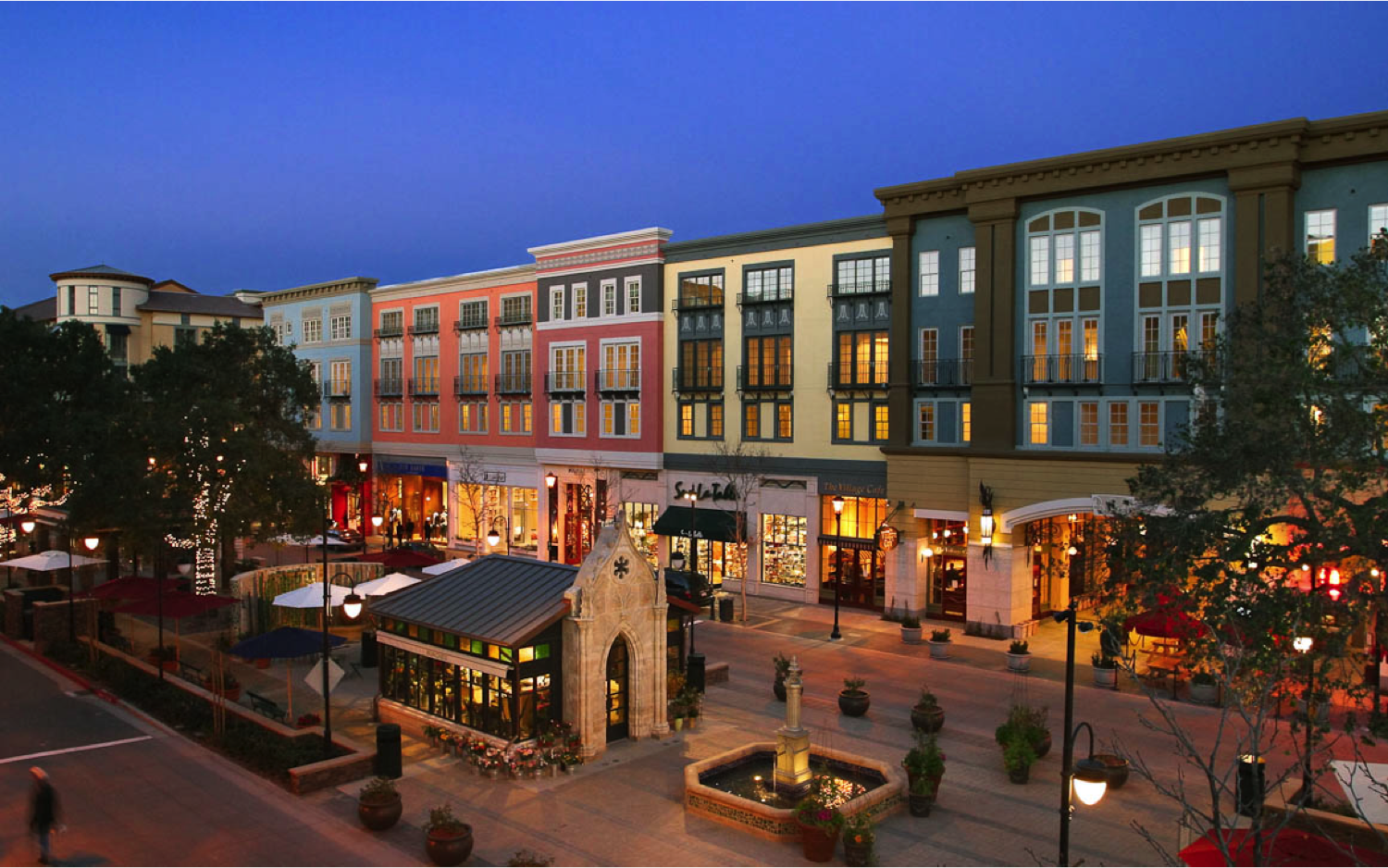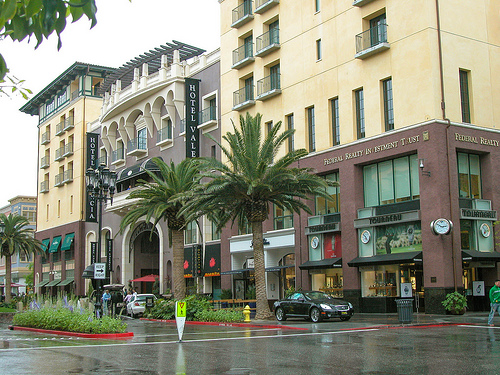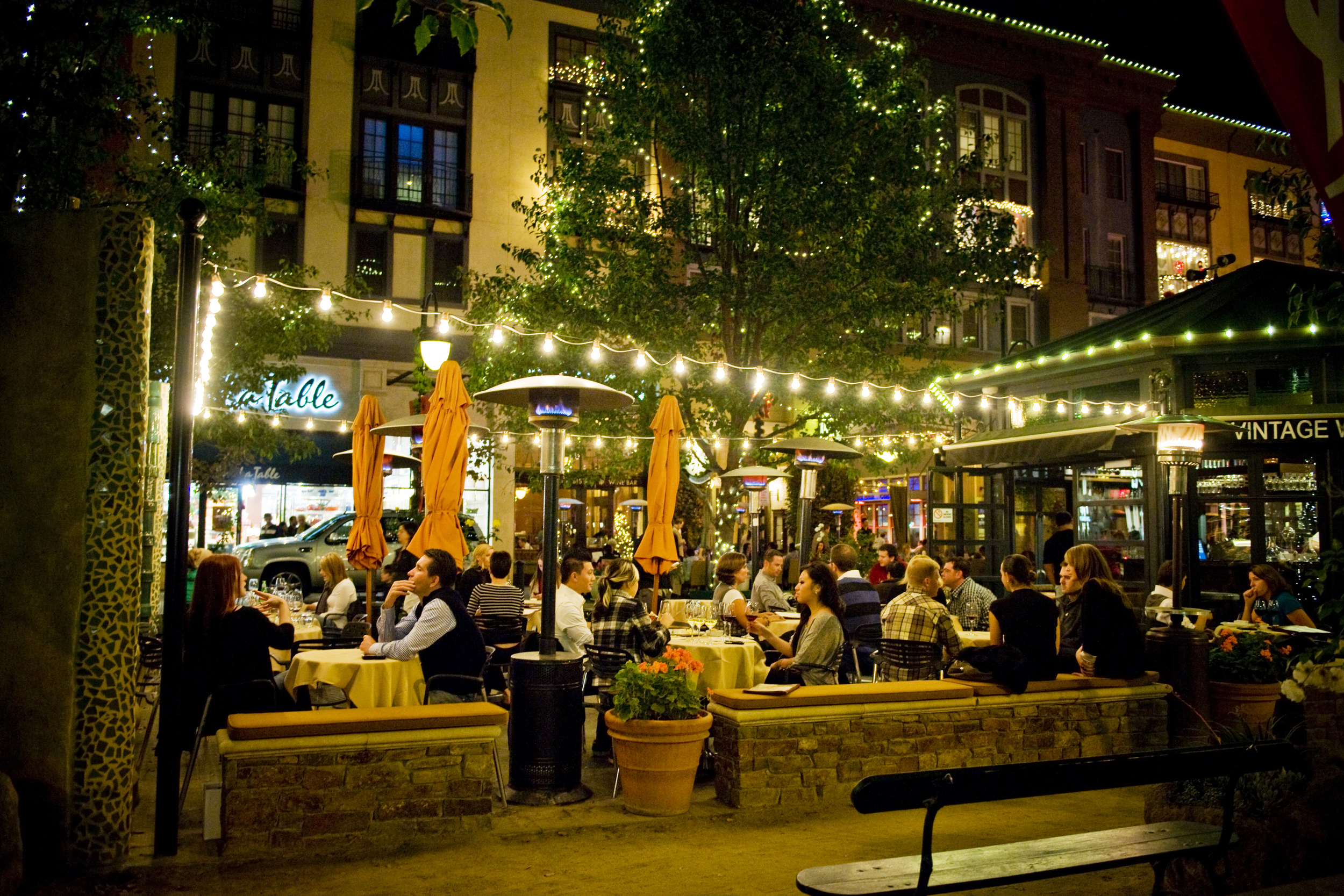<< Previous Case Study Next Case Study >>
SANTANA ROW San Jose, California
Near-term financial challenges, long-term market transformation






Developer
Federal Realty Investment Trust, Wilson Meany Designer
Designers
Master Planning: StreetWorks Inc.
Architects: BAR Architects | Studios Architecture | WRNS
Landscape Architects: SWA Group | April Philips Design Works
Land Use Program
- 42-acre site
- 622 housing units (1182 planned)
- 214 hotel rooms
- 672,500 square feet of retail, restaurant and entertainment space
- 65,000 square feet of office space (existing)
- 700,000 square feet of office space (planned)
- 3,516 parking spaces
Brief
Santana Row converted a failing strip mall into a mix of high-end retail and housing on a walkable central street. Although it could benefit from better integration with public transit and the surrounding neighborhoods, it has created a dense, thriving mixed-use environment that draws crowds from throughout the South Bay.
Santana Row is exceptionally well designed and constructed, with housing placed over retail; well-appointed, walkable streets and plazas; and parking artfully tucked into the interiors of city blocks. The street is modeled on the Ramblas de Catalunya in Barcelona.
The project had a slow start after a devastating fire and the late-2000s economic downturn. But today, Santana Row is thriving, providing a small pocket of the richly layered amenities that well-designed cities can generate. Santana Row illustrates the hunger for good places in San Jose and exemplifies the economic return on investments in quality pedestrian environments. It is so alluring that three new commercial office buildings are under development at Santana Row, a sign that urban amenities can market demand for desirable employment uses.
Lessons for Walkability
- Residents of suburban areas are hungry for great places to gather and linger.
- Well-designed streets and public spaces are attractions in themselves.
- Investing in quality places creates sustained value.
- Employers are drawn to urban amenities and walkable places.
- Good design can carry higher up-front costs, but ultimately pays.
Images courtesy Federal Realty, Google Earth
